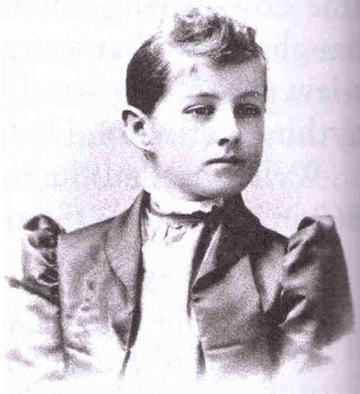|
|
|||
|
|||
|
|||
|
|||
|
|||
|
|||
|
|
|||
|
|||
|
City of San Marcos, Texas Historic District Survey - 1992
This craftsman style house is colored grey
with a white porch and trim around the windows and door. The
hipped roof has two dormers (front and left side) with a grey,
asphalt shingle covering. Small single pane windows accent
either side of the door and a larger sash window is set on the
right side with four panes. On the second story there is a two
multi-pane casement window with a sash. The front porch has a
wood framed banister with four, wooden, square columns with
siding on the second floor dropping over the porch. Asbestos
sheet siding covers the wall of the structure. |
|||
|
|||
|
News was phoned to this city from Blessing today in which it was stated that Mr. Wylie Kuykendall, a pioneer citizen of this county, had died at Cuero yesterday. The remains have been shipped to Blessing and will be buried in the family plot in Hawley Cemetery tomorrow.
Matagorda County
Tribune,
February 6, 1920 |
|||
|
Mr. and Mrs. Wylie Kuykendall Mr. Wiley M. Kuykendall is a native of Fort Bend county, born on the Brazos river 77 years ago. His parents, the Kuykendalls who were among Austin’s first colonists in 1822, died soon after getting the farm home improved, leaving one of Texas’ first natives to hustle for himself at the tender age of 6 years. At about the age of seven years the lad drifted into Matagorda county and worked his way among the hardships of western life, until fortune threw him in with that veteran ranchman, A. H. Pierce, better known all over South Texas as Shanghai Pierce, from which time on Fortune dealt kindly with the young Texan–very kindly when in 1869 he woed and won Miss Pierce, the only sister of A. H. and J. E. Pierce.
The Matagorda County News and Midcoast Farmer, Tuesday,
September 12, 1916 |
|||
|
|
|||
|
|||
|
|
|||
|
|||
|
Matagorda County Genealogical Society
publication Oak Leaves, Volume 5, No. 1, November 1985 Margaret Martha Moore Kuykendall, daughter of Capt. W. E. Moore and Mary C. Swift, was the wife of Robert Gill Kuykendall. Robert Gill was the son of Wiley Martin Kuykendall and Susan Pierce Kuykendall. I was born in 1871 in the old town of Indianola on Matagorda Bay. I was born just before midnight the last day of September though my family gave me the first day of October. That night there was a tempest. the doctor, whose name was Leek, wanted to name me Tempest, but my mother named me Margaret Martha for two aunts I never saw. When I was a few weeks old, my father came for us. He had been building a new home for us across the bay about 60 miles by water and probably 200 miles by land. My first remembrance was the night my sister was born, May 18, 1874. My next memory is going with my mother and little Inez on horseback to see a neighbor a mile away, and I rode behind for the first time. Of course, I felt very important and big. My father was a cattle driver for many years, boss man for Jim Foster, and he was away most of the time. Mother's people lived in DeWitt County and every summer she went to see the aunt who raised her. My father had a young brother that sold dry goods and notions over the county. He had a nice hack and two little mules, and he took Mother and the babies more than once to see her folks. There is not much of this trip that I remember, but one incident of our trip home that I remember. There must have been floods of rain. When we got to the Navidad, it was very high. My father was to meet us there, so I guess we waited for him to cross the river. I can still see him riding a pure bred horse and carrying the baby and me over the river. I guess he must have taken my mother first and then the hack. The water went up in the hack, and all that showed of the mules were their heads. That is all I remember of this trip. I have another early remembrance and do not know if it was before or after my sister was born. I was a restless child and did not sleep well at night. I was always wakeful and wanting to get in the cradle and then wanting to be taken into bed. The night I remember I decided I would play I was horseback riding on the foot of the bed. After being taken from the cradle and to bed several times, my father's patience gave out, and he gave me a spanking and shut me up in the smokehouse. There was a barrel of duck feathers near the door. I kicked it and shook the barrel, screaming at the top of my lungs. When my father got me out, I went to sleep. My mother caught a severe cold when I was a few months old and took TB. In those days people thought you should travel and live in the open, so before I was a year old, my father got a hack and two horses, "one he rode home from the Civil War," and started out west with my mother and an aunt, his sister, Dora, then about 20 years old. They were going west of San Antonio. When they reached San Antonio, they heard the Indians were on a rampage, so my mother would not go on. The people where they were going, were killed. My mother said she would rather die of TB than be killed by Indians, so they came home. There are no vivid memories until September 1875 when the great storm almost destroyed Indianola. In those days there was a great unrest in that county. There had been a hanging a few years before, and when a voice came out of the night, even the children, small as I was, were afraid. The night of the storm my father happened to be home and my Aunt Dora. Our house was small, one large room downstairs and porch on east and shed on the west. The stairs to the half-story went up on the outside on the north. I really do not remember the house then so well, but there was a kitchen north of the house. I think the wind began to blow in the afternoon, but everyone went to bed. Aunt Dora was in the upstairs. The first I remember was during the night when the wind blew the door open on the east porch, and the rain poured in. My father nailed the door shut with a board and hatchet and nails. The wind blew. The little house shook, and soon Aunt Dora came down from above, and we all huddled in one room. About five in the morning we heard a voice saying hello and asking if everyone was all right. Our neighbor, Grandpa Elliott, who lived a mile away, had braved the storm to see what damage had happened to us. I have only a vague memory of the days after. Our kitchen had blown off the blocks. The roofs from some of the outbuildings and limbs from the huge oaks were around. My father then had a boat that carried freight and passengers when there were any. My grandfather and mother lived in Indianola with a brother and his family. They were all very anxious as there were no telephones or telegraphs to carry the news. As soon as the storm subsided, he went to Indianola. My grandfather was drowned, and their house was washed away. I will tell you my grandmother's story as near as I can. The wind blew; the rain came in dashes and sheets, and the water rose higher and higher. My grandfather and mother and a niece went upstairs. There were some large cedar trees near the house. The house began to shiver and move. Grandmother got some sheets and planned to go to the cedar tree and tie themselves to the tree. She opened the door, and she saw that there was a plank going over to the tree. She never knew how it had got there. She called to her husband and her niece to follow her, but they did not come. She tied herself to the tree with the sheet. As the water rose higher, she moved higher. The wind and water lashed her and tore her clothes off, but she kept hanging on. I cannot remember how long she said she was in the tree, but the water went down, and she got down. She saw a house standing, wrapped rags about her and went to her friend's house. They took her in and fed her and put her to bed, and she slept. She had no idea what had become of her family. Her husband was found dead. Some prowlers found a wardrobe face down on the floor that was still intact. They heard a little noise and ran away. Finally they turned the wardrobe over and inside was a girl, alive. This girl was my grandmother's niece. So this is what my father found; his father gone and their house and all their belongings gone. Well, he brought them home with him. Corrine, the niece stayed with us and Grandmother, after a time, went to keep house for the uncle that used to peddle dry goods and notions. He had gone into another business at a point on the Colorado River called Elliott's Ferry. I think I should tell a little about my grandmother. She and my grandfather, Robert Baxter Moore, came from Elizabethtown, New Jersey. Grandmother's mama, I think, was Mary Clementine Layton. She was of French descent. Her father's father came over with a colony of French Huguenots. He was the first child born after they reached America, and they called him Safety. Grandfather was a very small person, scarcely five feet with eyes as black as a ___ and hair as black as a crow. They came to Texas soon after Texas was annexed to the union. They settled near Victoria. I do not know just how long they lived there, but they moved to Indianola. She could tell you some great stories about early days and about the Civil War and also the yellow fever epidemic. It is too bad we did not take down those stories that would be of great interest now. Now that I am an old woman I see that I have always seen through a glass darkly. My grandmother lived to be 84. Her hair was still back when she passed on. She was a remarkable woman and much ahead of her time. The years passed on, and my mother's health got worse and worse. There was another little girl born named Ella. She was a beautiful child and a remarkable one. I think when she was four, she had read the Book of John through. I am getting ahead of myself. My mother died in November 1878. Grandmother came to keep house for my father. Inez and Ella stayed at home, and I went with Aunt Dora. She taught school in a private family named Pierce, and I stayed there that winter. They had four children, two boys and two girls. The oldest, a boy, was older than I and the next, a girl, six months younger than I. They were a family of means even in those early days. They were so nice to me, and the oldest daughter was my good friend all her life. I cannot remember if I went there the winter of 78 or 79. My aunt taught school, and I went too. I was not exceptionally bright, and I think my mind ran on fairies, brownies and such, more than books. I must have learned to read at an early age for in 79 or 80 I read the Arabian Nights through. It was a large book, and I have never seen another like it. They had a lot of books and I imagine some were rare. I am sure the Arabian Nights was rare. Their house burned in the 1890's and everything was lost. The family moved north in 93 or 94, and I do not think they were ever all together there again. Two years after my mother's death, my father married his brother's widow. She had three children, a boy and two girls, the boy about 8 months younger than I. When my mother died, my grandmother came to keep house for my father and my two sisters. Ella, the youngest, was about 18 months old and she was Grandmother's child. My aunt and I came home of Fridays if the weather was good. That was about nine or ten miles. We rode horseback with me behind my aunt. She had an old cow pony; not so old when she first got him. He was real white with a black nose and black eye lashes, and I thought he was the most beautiful horse that ever was. I loved horses, always did. My father did not know it; but when in early spring when they would round up a pen full of horses, I would pull hands full of grass and go into the pen with them and soon some of them would be eating from my hand. I suppose that the Lord really takes care of fools and children or so many would never have grown up. After my father married again, my grandmother and Ella went back to keep house again for Uncle D. He then had a store and post office at Elliott's Ferry, and his younger brother then came to live with them. I cannot remember just how long she lived there but until Uncle D. married. Then Grandmother kept house for Mr. Pierce. He did not go north to live when his family did, and some of them came back to Texas every summer. She was there, I think, about six years. There my little sister, Ella, died. The doctor did not know what was the matter. From the way she was taken and the short time she lived, it must have been appendicitis. She had had two spells before that were similar when she nearly died. When I was ten years old, my aunt taught public school at the Killingsworth schoolhouse, and we lived with the Killingsworths. They were nice to me, and I was like one of the family. They had three children, a boy older, a girl about my age and a younger girl. I helped with all the chores and in the spring of the year I raised chickens, a hundred or more. When I left, they gave me 23 pullets and a rooster. I was so very proud of them. About this time my father bought another place, known as the Sparks place. He moved our old house and added to it. This place was near two rivers, Wilson Creek and the Trespalacios. Wilson Creek emptied into the Trespalacios. It was a lovely place, and we children fished and rowed a skiff up and down both rivers. The tide from the Bay came up Trespalacios and when we had a long dry spell, the river got quite brackish and fish from the bay came up. Salt water fish. My sister, Inez, was the best fisherman. I don't remember going fishing with them often, but they caught red fish and salt water trout and once we caught a tarpon six feet long. We also caught crabs. There was one place on the river bank; we called it the flat. They had to take the tarpon there to haul him out. Could not get him in the skiff. This was about 1884. I was about 13 and I loved to read so I imagine I was reading while they were fishing. We children all had to work. I milked the cows and tended to the milk and churned. I had a churn that churned with a dash. I churned and read. I think I read most of Dickens works while I churned. We had from ten to fifteen cows that we milked in spring and summer. They gave about a half gallon each. Of course, they all raised a calf, and I did not want my calves poor. I would have to say the little amount of cream we got from the milk, and we turned the cows out in September. In 1886 or 1887 we kept a cow through the winter. I loved the cows. They were all my pets. One winter I had a cow that had lost her calf. I milked her all winter. This I learned when I was about eight years old. My mother milked as long as she was able, and some of my earliest memories was going to the pen with my mother with a little tin cup. She would tie off the calf; I got on, as we say the off-side and milked in my little cup, so I cannot remember when I could not milk a little. My mother was a lovely looking person with a voice like an angel. She was also left an orphan at a young age. There were four girls. My grandfather took the three older girls; my mother was the oldest. An aunt, took the baby, only two weeks old. My mother lived with aunts some of the time, and she was really a nursemaid. She loved all the children, and they loved her, but she did not get the chances for school that her cousins did. She was a natural musician and played the piano better than the cousins who had more advantages. Of course, I do not remember her so much, but she loved us all, so I know she hated to leave her three little girls. My stepmother was a smart woman, and she did a good job. She had three children when she married my father. She had five children by my father, two boys and there girls. One died when she was eighteen months old with meningitis or infantile paralysis. She lived at death's door for thirty days. She was next to the youngest and one of the sweetest children I have ever known--perhaps too good for this life. I remember my mother making me pretty clothes. I can also remember riding behind her, and my sister was in her lap. She loved people, I'm sure, and we often went to spend the day with a neighbor. It was a great shock to me when she went away, and I missed her. I went with my Aunt Dora. She must have been teaching at Mr. J. E. Pierce's. If I did not go that winter, I went the Fall of 1879. The first winter after Mother went, I only stayed part time. The next year, 1879, I stayed with Aunt Dora all winter. The Pierce's had four children. Johnnie, the oldest, was about two years older than I. Pearl was almost a year younger, and then Grace and Abel. Aunt Dora taught in the house. (Aunt Dora, Eudora I Moore, wrote a diary of early Indianola called "Texas Tears and Texas Sunshine.") Mrs. Pierce was so nice to me. I know she made me my first birthday cake. I was eight. Her mother lived with them, and she had a nephew, Lacy Pybus, that stayed and went to school there. The day of my birthday, Mrs. Lacy and Lacy Pybus went fishing. Mrs. Lacy slipped in the creek. Lacy Pybus raced to the house for help. Mrs. Lacy was very large, weighing two hundred or more, so all hands and the cook, also the children ran to the creek, and the birthday cake burned. The first winter I visited there, Mrs. Pierce's niece, Mamie, would sometimes be there. She was A. H. "Shanghai" Pierce's daughter, and she often rode home with Aunt Dora when we would go home for weekends. I thought she was the loveliest person I had ever seen. She had long yellow hair that came to her knees. She wore it in one large plat or sometimes two plats. In the spring of 1879 her father took her north to a sister in Vineland, New Jersey. She never lived in Texas again; and when she grew up, she married a Kansas City man, Mr. Withers. I only saw her a few times in these years. I was somewhat of a tomboy, and I often got Pearl in trouble since she had to always wear shoes and was not allowed to climb. I hated shoes and could climb like a cat. I remember one time we had pulled off our shoes and climbed up a tree. We saw Mr. Pierce coming so we kept as still as mice, but he saw our shoes at the foot of the tree and found us and made us come down in a hurry. He gave us a good scolding and forbade tree climbing when I was at his house. We used to wander in the woods. I imagine Aunt Dora was with us, to find flowers and look for faeries, which I was sure we would someday find. I think I spent two winters in their home. Their place was a half-way house and so many people stopped there to spend the night, sometimes several days. There was a store and a post office, which, I think, had mail three times a week. A little man carried mail form Edna to Elliott's Ferry. My Uncle Dolph Moore had that post office and a little store. The ferry was over the Colorado River, near where Bay City is now. Mr. Pierce and his brother, A. H., had big ranches and lots of hands, both black and white and help in the kitchen. The white help and the guests ate with the family in those early days. Mr. George Hamilton kept the store and post office. He was a big, fat man with a long beard, and he was so good to us children. Pearl and I liked to plat his whiskers, and he made great pets of us. He and my father were great friends. He was also the bookkeeper for the Pierces. My father had a boat run to Indianola for many years. The first boat he built at our place with the help of a man named Lord. The boat was Maggie and launched before my mother died. I just have a few vague memories. We had an old dun horse named Selma, and he would only leave the house once. I think I was six when they put me on the horse and sent me to meet my father. I was to go to Hixes. When I got there, the boat was coming and I waited. I rode my father's saddle and rode home behind him. I also remember an incident when I was at Killingsworths. Aunt Dora and I were going home one Friday afternoon. Our horses had been in the lot most of the day. In those days it rained most of the fall and winter, and there were puddles of water everywhere, also in those parts there was a wretched bush. I stopped to let my horse drink. When he finished, he ran over to the bush and brushed me off. I had to walk back and change clothes. We finally got my horse and got home before night. Sometimes we went to the Pelton's and spent Sunday night and got to school before nine. The Pelton's lived not more than four miles from the Killingsworths, right on the banks of the Trespalacios. The Killingsworths lived on the same creek further up.
I remember another accident I had when I was
smaller. I was riding behind Dody on Surry. We had to cross
Briar Creek. It was muddy. Surry jumped, and I stayed behind and
fell in the mud. I guess I got on again and went on, mud and
all. We were on our way to Pierce's then. |
|||
|
|||
|
|
Copyright
2010 - Present by the Kuykendall Family |
|
|
Created Dec. 24, 2010 |
Updated Oct. 1, 2017 |
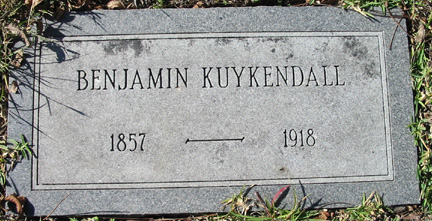 Mr.
Benjamin Warner Kuykendall, a life long citizen of
Matagorda County, died at Wharton Saturday, May 11,
and was buried in the
Mr.
Benjamin Warner Kuykendall, a life long citizen of
Matagorda County, died at Wharton Saturday, May 11,
and was buried in the
 MISS
MISS



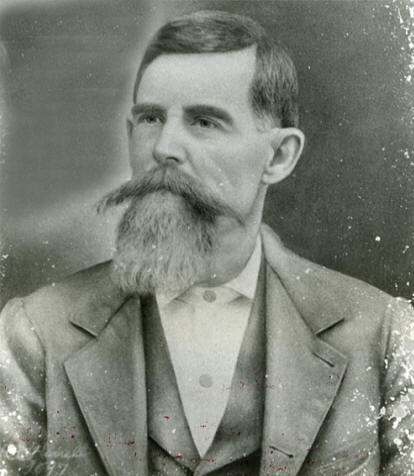

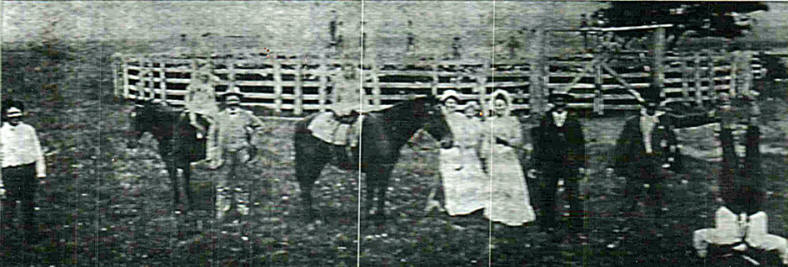
 Wylie Martin Kuykendall was born
in Fort Bend County, Texas on October 22, 1839, to
Robert H., Jr. and Electra Shannon Kuykendall. He
was named for the family friend and prominent
colonist, Wiley Martin. Robert H., Jr. failed to
return from a trip and was presumed killed by the
Indians sometime in 1846. Wylie went to live for a
while with his great-uncle, Joe Kuykendall. When he
was eleven years old, he went to Matagorda County to
live with his grandmother, Susan K. Tone.
Wylie Martin Kuykendall was born
in Fort Bend County, Texas on October 22, 1839, to
Robert H., Jr. and Electra Shannon Kuykendall. He
was named for the family friend and prominent
colonist, Wiley Martin. Robert H., Jr. failed to
return from a trip and was presumed killed by the
Indians sometime in 1846. Wylie went to live for a
while with his great-uncle, Joe Kuykendall. When he
was eleven years old, he went to Matagorda County to
live with his grandmother, Susan K. Tone.

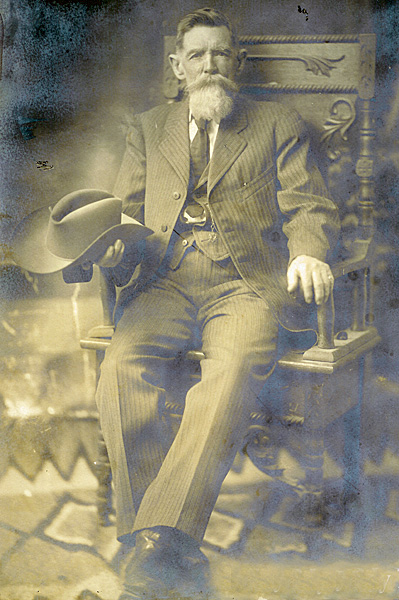




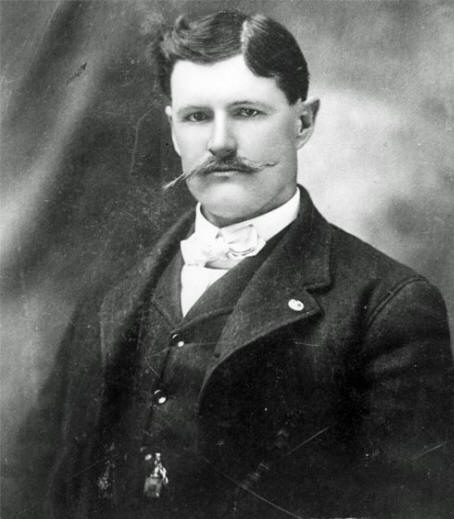

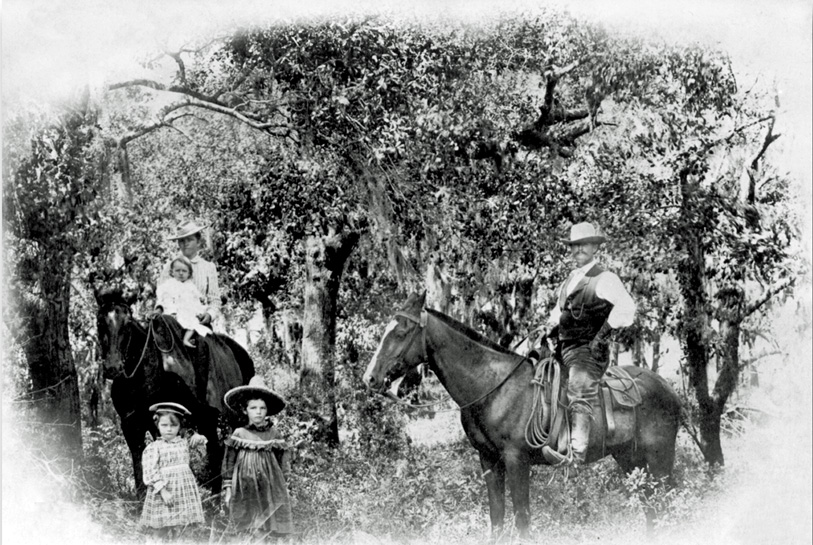
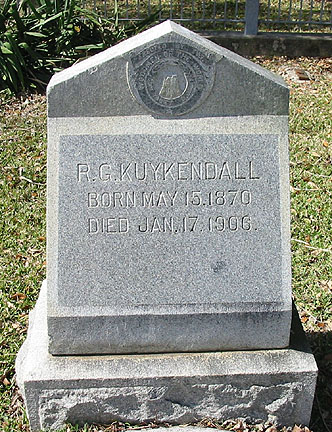 Robert
Gill Kuykendall was born in Matagorda County on May
15, 1870 to Wylie Martin Kuykendall and Susan E.
Pierce Kuykendall. There is some confusion about his
middle name. It is shown by McCrosky as Gill, one
letter states that it is Gilbert, and his wife,
Maggie, told my mother, Alice Hamlett Kuykendall,
Austin, Texas, that it was Gilden, so she named her
first son Robert Gilden Kuykendall after his
grandfather. Gill is most likely correct, shortened
from Gilliland Kuykendall. Wylie's uncle was Joseph
Gilliland Kuykendall.
Robert
Gill Kuykendall was born in Matagorda County on May
15, 1870 to Wylie Martin Kuykendall and Susan E.
Pierce Kuykendall. There is some confusion about his
middle name. It is shown by McCrosky as Gill, one
letter states that it is Gilbert, and his wife,
Maggie, told my mother, Alice Hamlett Kuykendall,
Austin, Texas, that it was Gilden, so she named her
first son Robert Gilden Kuykendall after his
grandfather. Gill is most likely correct, shortened
from Gilliland Kuykendall. Wylie's uncle was Joseph
Gilliland Kuykendall.